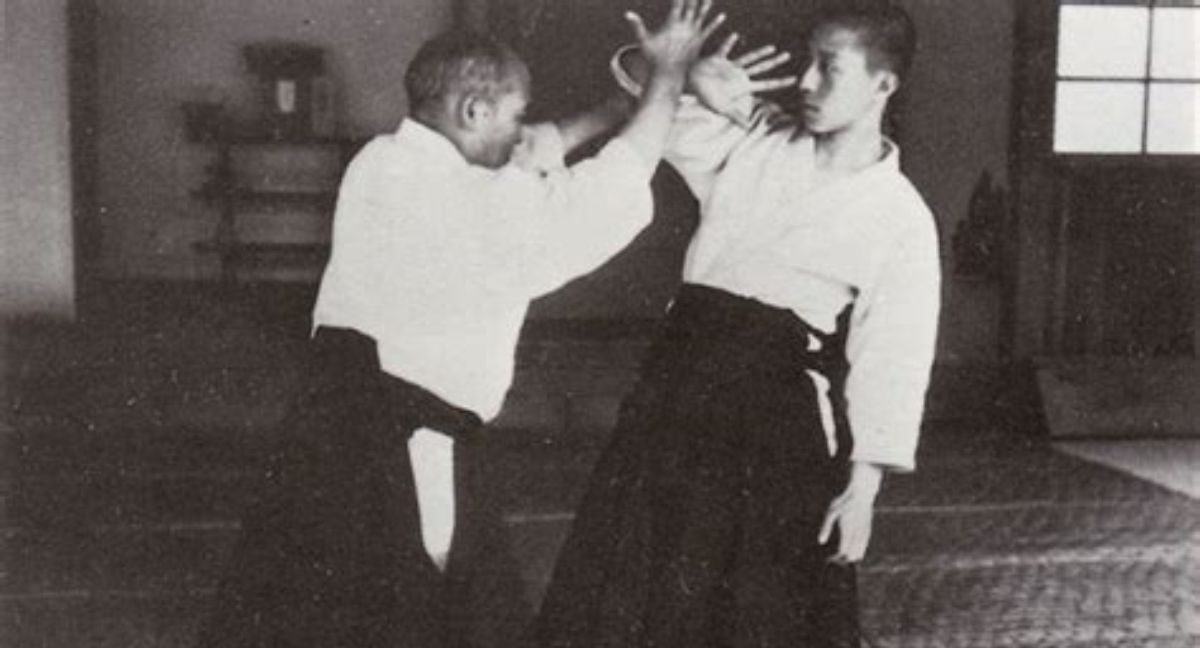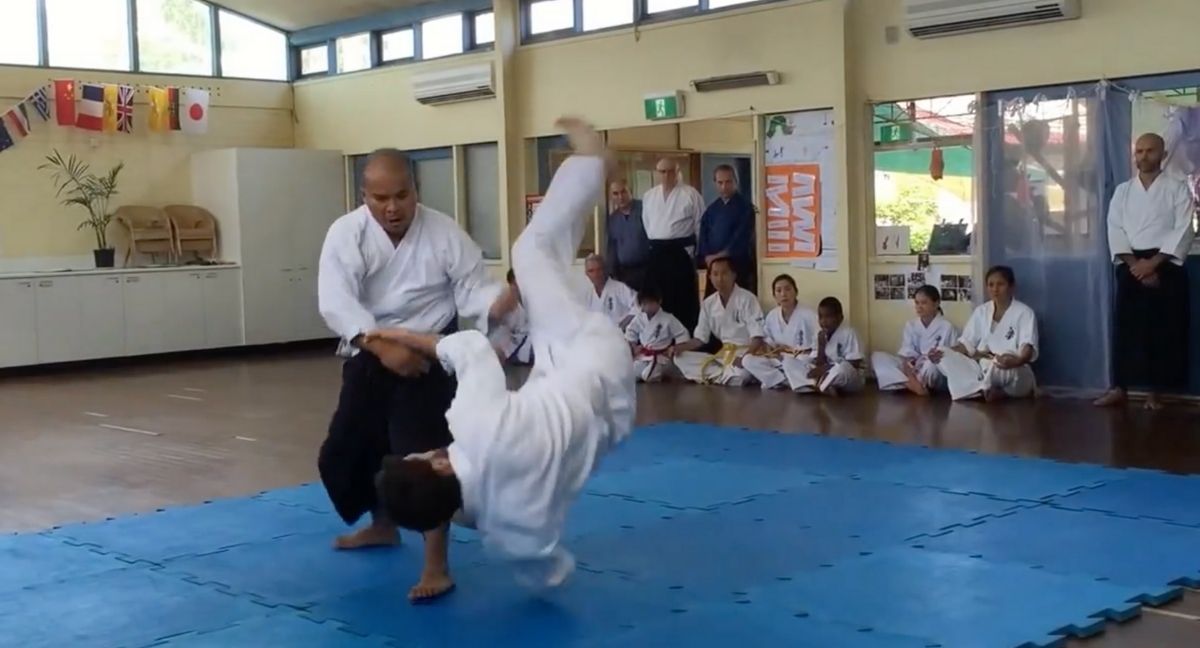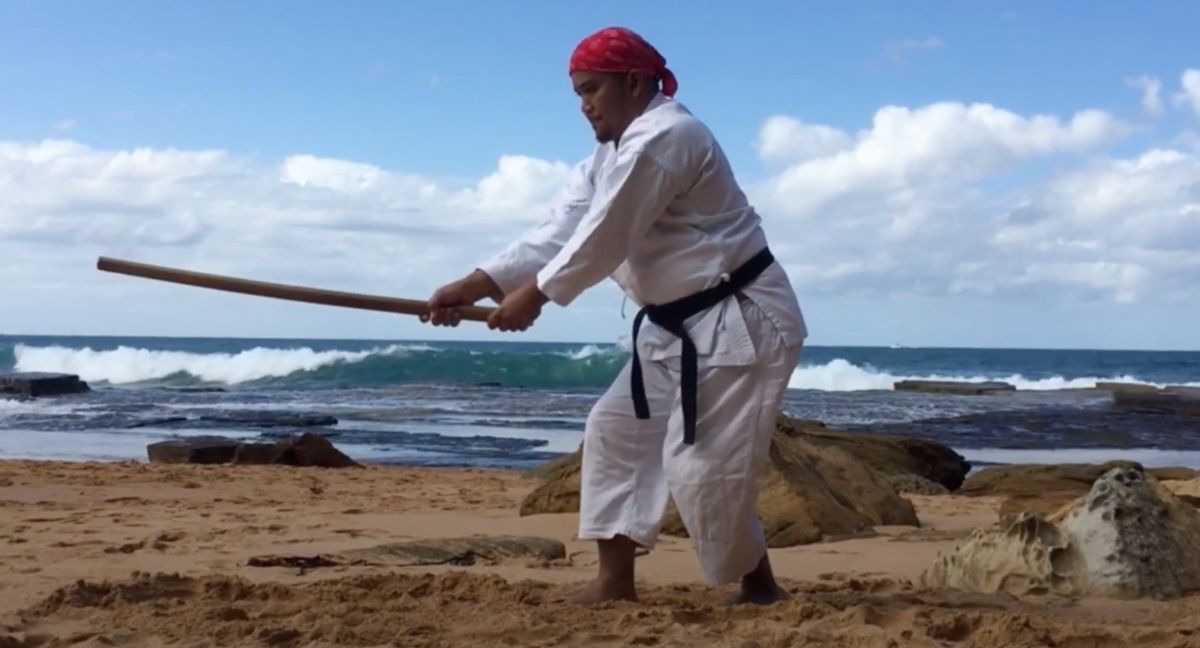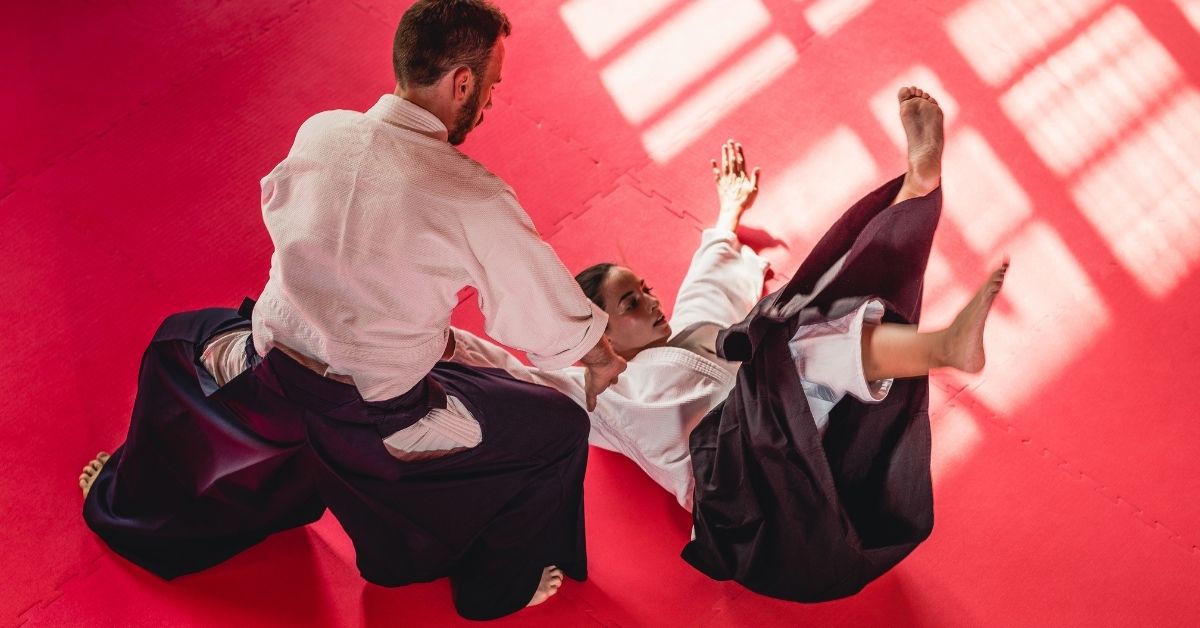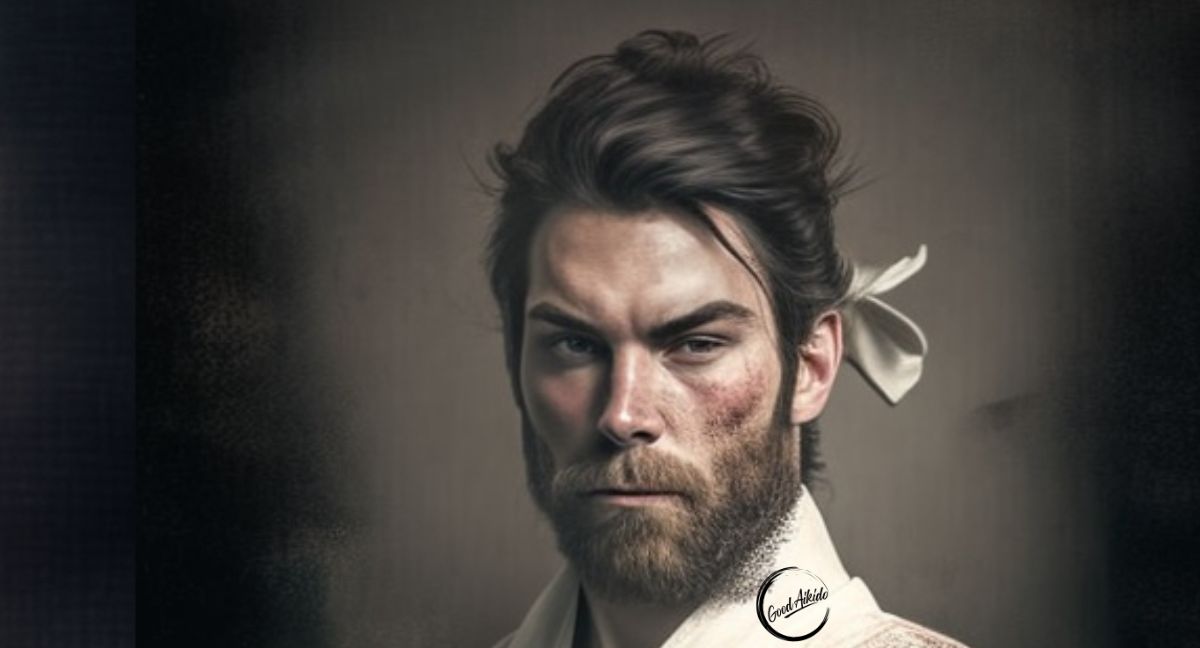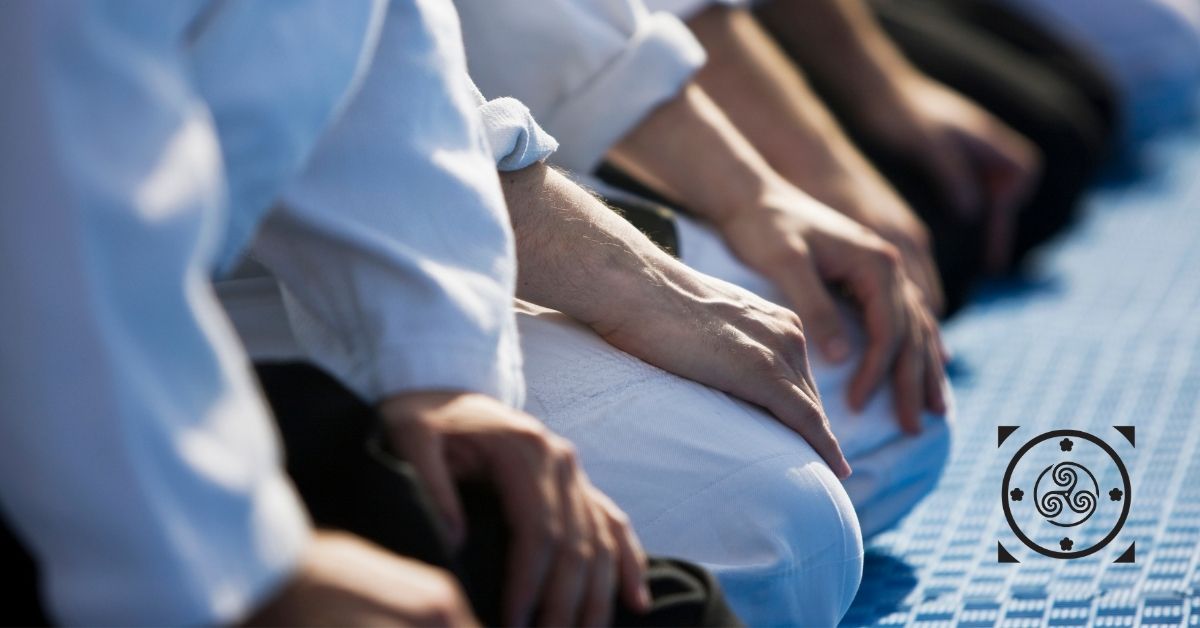Aiki: The Martial Art Concept That All Martial Artists Should Know About
Aiki (合 氣) literally means ‘Join Energy’ or ‘One Energy’. It is a fusion of two energies or forces or momentum into one. Aiki is a Japanese budō term, that allows a conditioned practitioner to negate or redirect an opponent’s energy, force, or power. Aiki can be found in Japanese Martial Arts such as Aikido, Jujutsu, Karate (Go no Sen), and Judo. In the western world, we call it ‘blend’. The ability to move in a certain way that one can use another person’s movement to their own advantage.
Legend says that Aiki was born from the battlefields of ancient Japan when the Samurai lost or broke his spear or sword and needed to ‘battle’ it out to survive. Samurai (A) cannot just punch and kick, the opponent – Samurai (B) because he is wearing armour. A punch or a kick has to be close to perfect, in timing, and power to work against a good armour in a battle situation. Samurai (A) must use Samurai (B)’s attacks against him to take him down, whilst he (Samura A) still standing, and take his weapons from him, so he (Samurai A) can use it to his advantage and survive.
Just a side note: Wrestling is not good in a battle situation, because the fight becomes one on one. In the old days, a warrior or a soldier has to embrace ‘One to Many’ or multiple attacker tactics, because wrestling means soldiers are fighting ‘one on one’ on the ground. A warrior standing can easily spear, stab, or cut an opponent that is on the ground. Hence ‘the fallen’ is used to describe the warriors that died, and the ‘last man standing’ is used to describe the one that survives. Wresting is not a good ‘go to’ fighting tactic. It only works in sports and ‘one on one’ scenarios.
Click Here to Learn Aiki
Aiki The Martial Concept
Aiki is a sophisticated concept and three aspects can be used
1) Blend Do Not Clash
Aiki typically describes an idea of oneness or blending in the midst of combat. We in Aikido call this Awase (合わせ) – to blend.
In Aikido, it generally describes the more elevated notion of blending rather than clashing. “Blending” is often described even within aikido as awase (合わせ).
Emphasis is upon joining with the rhythm, motion, and intent of the opponent in order to find the optimal position, angle, and timing with which to apply energy, force, and momentum. To Awase or blend with an attack, it is necessary to yield to internal forces. Timing and feeling the technique is the key to awase.
You’ve probably seen an Aikidoka offer an opening (eg an arm) to lure or bait the attacker. Why do we (Aikidoka) do it? Because we know what to do and how to awase with an induced or baited attack.
This concept is so foreign to other inexperienced fighters or martial artists, that ‘offering an opening’ is one the most asked questions about Aikido. You’ll probably hear the comment or question, “no one will just grab someone on the wrist like that”. I’ve used this technique in sparring, fights, and even boxing. It is a very good tactic. If you don’t believe me just watch any Mayweather fight and you’ll see awase and baiting a lot.
Aiki ≡ Awase ≡ Harmony ≡ Synchronicity ≡ Resonance
This point of Aiki is what makes some Aikido techniques look so magical and unrealistic because it is subtle. One has to feel the awase, it is not visible as forces or currents forces are within the body. One can compare this to the water current of a deep river, the observer needs to be in the river to experience its strong currents.
This Awase aspect of Aiki is the core concept that leads to the idea that Aikido is the Way of the Harmony. One can interpret that the harmony described here is not just the peace-loving harmony that Aikido is famous for, No no. The Harmony being described here is closer to the word synchronicity or resonance. That is when two or more objects (of persons) are moving in synchronicity, in rhythm that they are in harmony.
Click Here to Learn Aiki
Aiki is related to the principle of ‘Ju’ of Judo and Jujutsu. ‘Ju’ is used more on the physical manipulation of the mechanical and structural level of the body. Aiki is internal and Ju is external. Both if done properly are Awase.
2) Leading The Attacker
The Aiki practitioner is able to lead the attack, and the attacker, into unbalanced positions. The influence over an attacker grows as the attacker become unbalanced.
Body movements (tai sabaki) used for this may be large and obvious or small and subtle, internally generated movements. Subtle weight shifting and the application of physical manipulation to Uke (The receiver) balance enable Tori to lead him/her into a position where Tori has the advantage.
Click Here to Learn Aiki
3) Use of Internal Strength – Ki Energy
Kiai and aiki use the same kanji (transposed) and can be thought of as the inner and the outer aspect of the same principle. Kiai relates to the manifestation, emission, or projection of one’s own energy externally (external force), while Aiki relates to one’s own energy internally (internal force). Force in this instance doesn’t mean violent force. Force = MA, remember. Force can also be subtle and invisible. Thus Kiai is the union of energies manifesting out (eg a warcry) while Aiki is the union of internal energies surging within. This use of Ki will involve the use of Kokyu i.e. breathing with action and intentional movement.
Kokyu (breath) is a natural power that can be produced when the body and consciousness (Mind ≡ Ki ≡ Intention) are unified. Passive breathing is not Kokyu. A big difference between Kokyu and normal everyday breathing is intent. Normal breathing becomes Kokyu when infused with intent, action, and movement.
The term kokyu (呼吸) can also be used to describe a situation in which two opponents are moving with appropriate timing.
Click Here to Learn Aiki
If you are near Macquarie Park, Macquarie University, Ryde, North Ryde, or near Epping, Eastwood, Chatswood, Lindfield, and near Lane Cove, then Good Aikido Martial Art School Sydney is the best Aikido martial art school or club for you.
We also teach Aikido and martial art online or Zoom, but there is nothing like an in-person class.
Martial Art School Near North Ryde
Our Martial Art School for Kids is at Macquarie University Sport and Aquatic Centre.
Our Aikido Club and Martial Art School are at Ryde Community Sports Centre.
Subscribe To My Newsletter
BE NOTIFIED ABOUT BOOK SIGNING TOUR DATES
Donec fringilla nunc eu turpis dignissim, at euismod sapien tincidunt.

